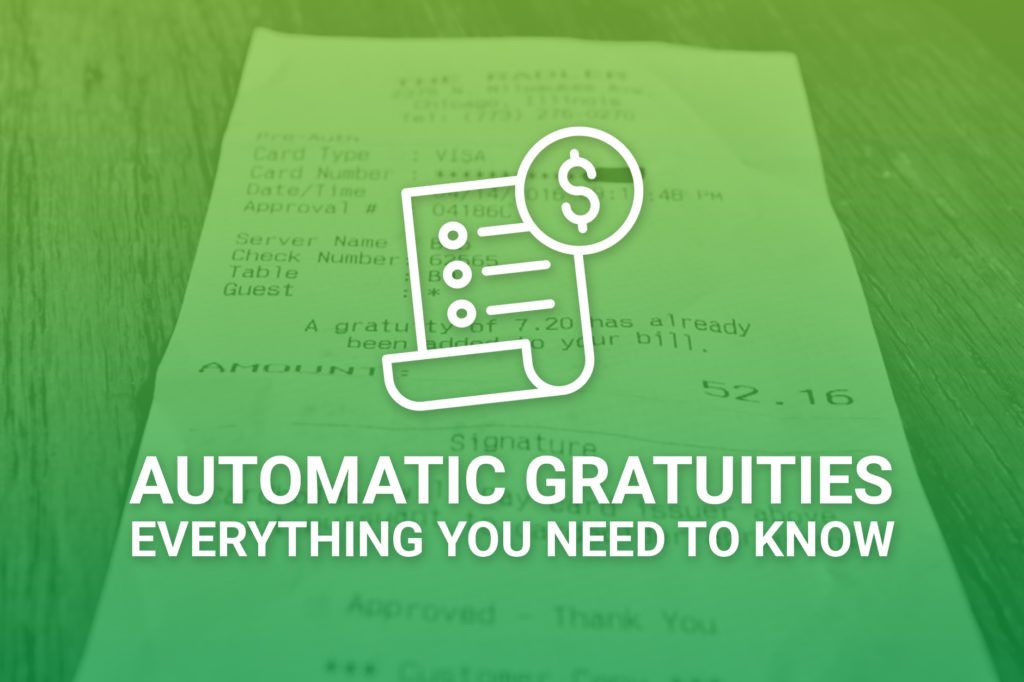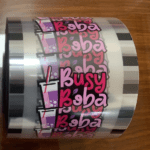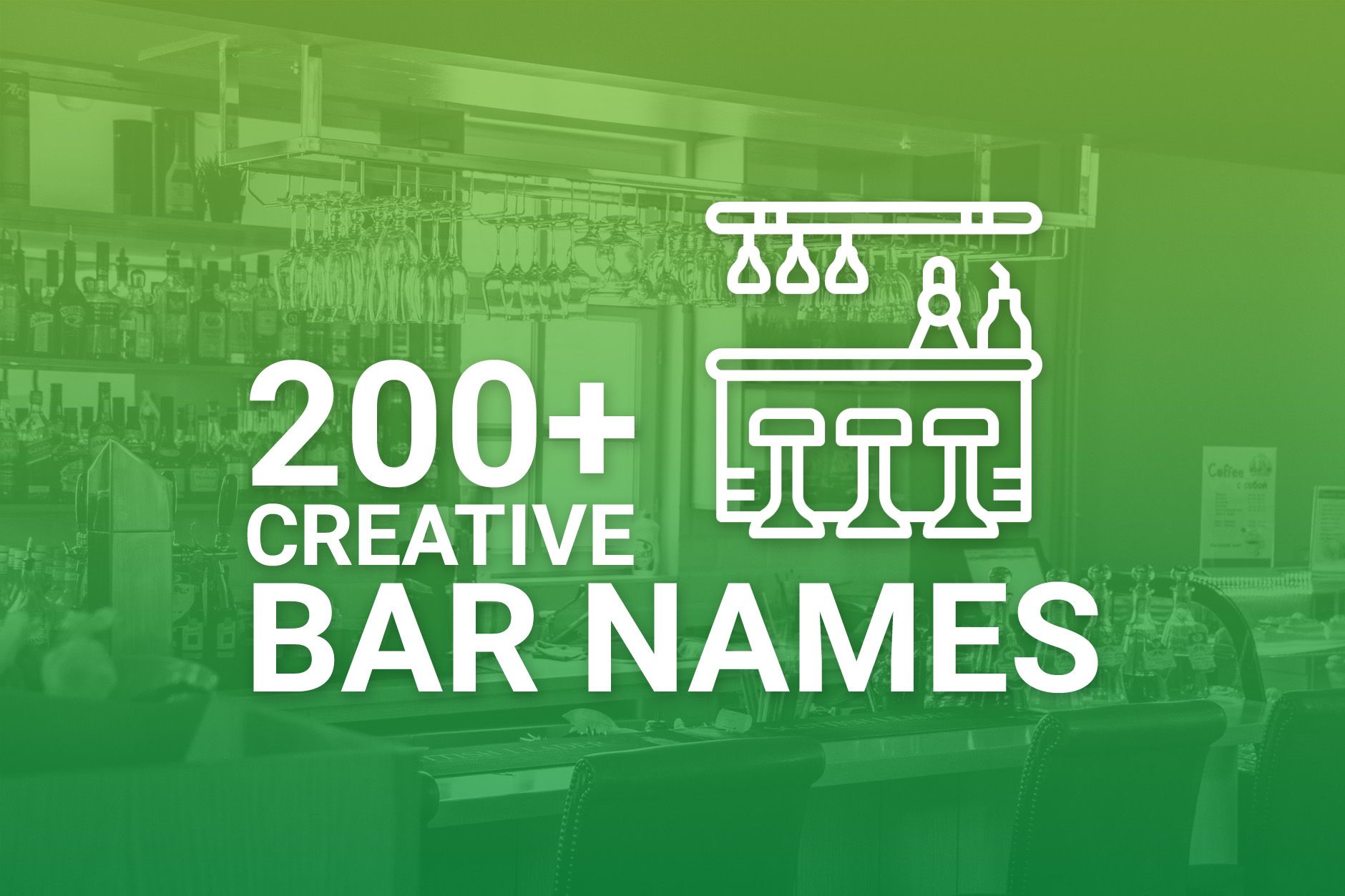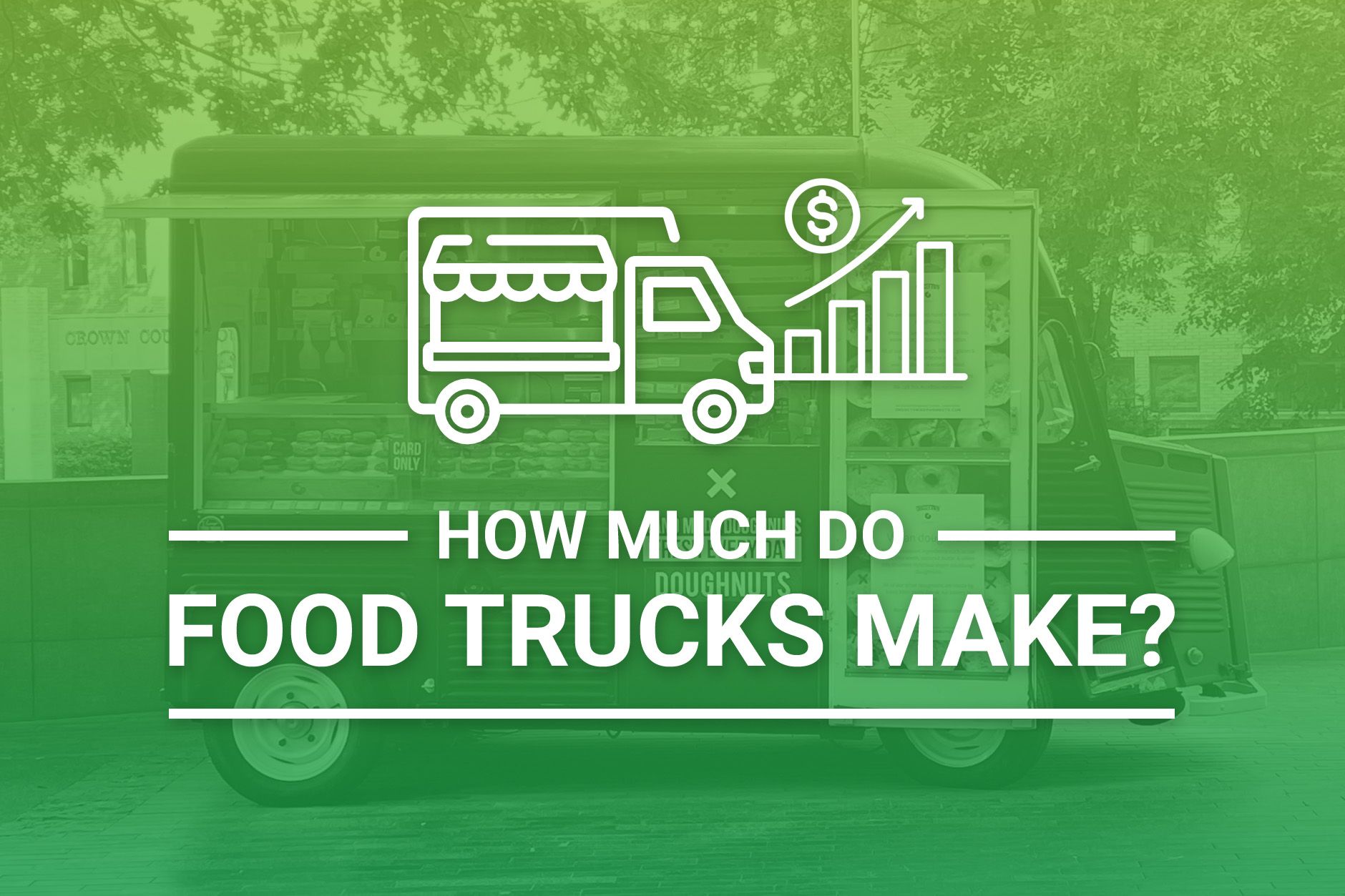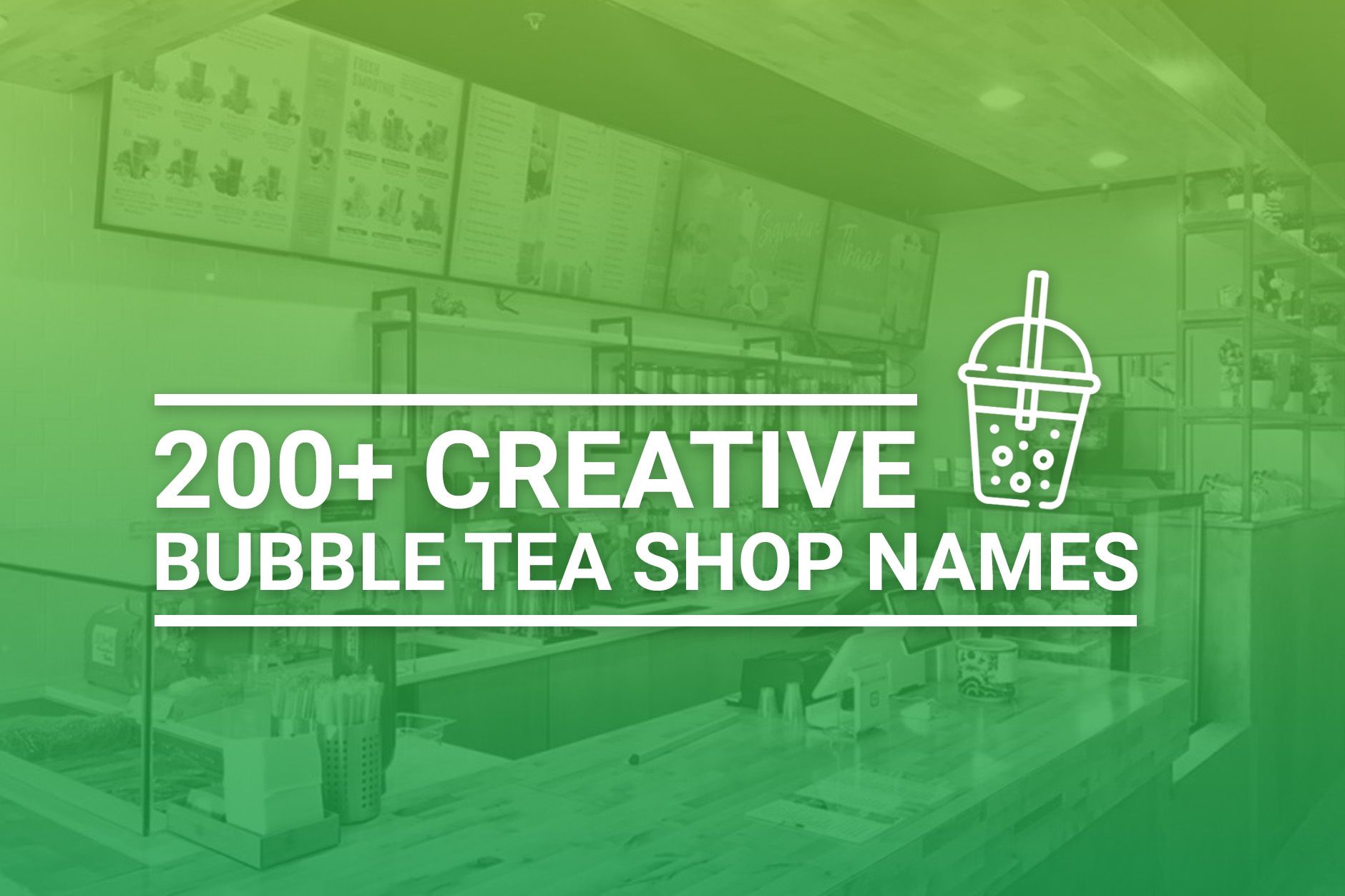In the food and beverage industry, many employees depend on tips – or gratuities – to earn money. Typically, these tips are left up to a customer’s discretion. While tipping is customary in the United States, customers are not required to leave a tip – which is why some restaurants, bars, and other establishments use automatic gratuities.
There are a number of laws that affect your ability to impose automatic gratuities. Understanding these laws, and complying with the tax code for reporting this income, is vital to your business’ long-term success. If you’re considering using automatic gratuities – or not using them anymore – keep reading to learn everything that you need to know about this type of service charge.
What Is an Automatic Gratuity?
An automatic gratuity is a charge that is added to the bill of a customer at a restaurant. Typically, this automatic gratuity is 18 to 20% of the bill, although an establishment may choose to have a higher or lower automatic gratuity. Restaurants who use automatic gratuities often let their customers know in advance about this policy through signs or a notice on the menu.
Automatic gratuities are often added onto the bill for large parties, with 6 to 8 (or more) diners in the group. In this way, the server who waits on them will be properly compensated, even if the customers decide to split the bill or want separate checks. They are also used for banquets and other functions, at hotels for room service, and for bottle service at bars and nightclubs.
Importantly, automatic gratuities are not actually considered tips. Under a 2012 ruling from the Internal Revenue Service (IRS), they are classified as a service charge. The difference between tips and service charges is important when it comes to your tax obligations, as detailed below.
Generally, an automatic gratuity is considered a tip (and not a service charge) if:
- The customer gives it freely;
- The customer has the unrestricted ability to determine the amount of the tip;
- The payment is not dictated by employer policy; and
- The customer determines who receives the payment.
If any of these four factors do not apply, the automatic gratuity will be considered a service charge rather than a tip.
How Does the IRS Treat Automatic Gratuities?
The IRS has specific reporting requirements for employee tips and service charges. These rules must be followed by both employers and employees. The way that your employees are tipped – or not tipped – can impact your labor costs significantly.
Generally, employees and employers must track and report tips. The total amount of tips are considered part of the employee’s income and are subject to withholding for Social Security, Medicare, and other taxes. Similarly, service charges are treated as regular wages for employees, and are subject to withholding requirements.
Because service charges are categorized as regular wages for tax purposes, employers must deduct payroll taxes before distributing them to employees. By contrast, withholding is not required in advance for tipped wages. In addition, for service-based businesses, employers can take a tax credit (the FICA tip credit) for tipped wages – but not for service charges. Because the FICA tip credit can save restaurants a substantial amount of money, tips are often more favorable, tax-wise, than automatic gratuities/service charges.
The tax laws surrounding automatic gratuity are complicated. For this reason, it is a good idea to consult with a tax expert to determine your reporting requirements and to seek advice on whether you should use an automatic gratuity system at your restaurant.
Are Automatic Gratuities Legal?
It is perfectly legal to add an automatic gratuity to bills at your restaurant. Depending on where you are located, you may be required to provide advance notice of the charge to your customers. Some states require restaurants, bars, and other establishments to disclose the service charge to customers before adding it to their bill.
While automatic gratuity is legal, it raises certain issues (in addition to taxes) that must be considered. In particular, employers must be aware of both federal and state laws regarding tipped employees when deciding whether to impose tipped gratuities.
The federal Fair Labor Standards Act (FLSA) allows employers to pay as little as $2.13 per hour (compared to the federal minimum wage of $7.25 per hour) if they receive tips. Employers can effectively use the tips that their employees receive as a credit against their obligation to pay minimum wage. As long as an employee’s tips add up to at least the minimum wage, then employers can take the tip credit.
Automatic gratuities (service charges) are allowed under the FLSA – but cannot be considered tipped wages. In other words, if you impose a service charge, you cannot use that amount as a tip credit against your employees’ minimum wage.
Each state also has laws regarding tips. Many of these laws do not address automatic gratuities, and who is entitled to them under the state’s labor laws. However, there are some states that have set rules on when an automatic gratuity (service charge) must be paid to employees.
In Washington, if a business imposes an automatic gratuity, it must disclose on both the receipt and menu how much (if any) employees will receive from the charge. If nothing is disclosed, then the entire amount must be paid to the employee who provides the service to the customer. Under this law, restaurant owners can choose to keep the service charge – as long as they disclose it to customers.
In 2019, a California court ruled that automatic gratuity may have to be paid to employees who provide the service. An employee of a banquet hall filed a lawsuit against her employer for retaining the 21% service charge imposed for events. The court found that a service charge may be considered tips – and as a result, employers may be required to give them to employees.
Some states, such as New York, define tips differently than the federal government. Under New York law, there is a presumption that any charge on a bill that is not for food or drink is considered a tip. In states with these types of laws, it is important to properly categorize automatic gratuities so that you can comply with labor and tax laws.
Auto Gratuities Vs. Tips
As previously mentioned, gratuities are not considered tips. The main difference between a gratuity and a tip is that a gratuity is a required charge added to the bill that must be paid while a tip is not required and is provided by a customer voluntarily.
Suggested tip amounts printed on bills can sometimes be confused for an automatic gratuity, but this is not the case. A suggested tip guide is not a required charge, and the customer still gets to choose how much they tip (if they tip at all). If you print a suggested tip guide on your bills you are not using an automatic gratuity system.
There are pros and cons to both automatic gratuity and tipping systems. As a service charge, auto gratuity can provide the restaurant with reliable funds that can be allocated as the owner sees fit. This gives owners more flexibility when paying wages and helps to ensure that staff are paid a livable wage. Automatic gratuity also helps to eliminate the confusion that comes with tipping when large parties split the bill.
If you elect to use an automatic gratuity system you will be required to pay employees minimum wage. Auto gratuity helps recover money from customers who wouldn’t otherwise tip, but you may also lose money from customers who would usually tip over 20%.
Should I Use Automatic Gratuities?
Automatic gratuity policies have long been used by restaurants, hotels, bars, and even cruise ships to ensure that their employees are properly paid for certain types of service. However, as laws evolve and the debate about the minimum wage continues, many establishments are re-thinking these policies.
There are certain benefits associated with automatic gratuities, or service charges. It is often easier to simply impose the charge than it is to track employee tips. It also guarantees that you or your employees will be paid a minimum amount for their service.
However, many businesses have moved away from automatic gratuities because they aren’t as favorable for tax purposes. Service charges also have the potential to anger customers, who may not read the fine print on the menu and only realize that the charge has been imposed when they review their bill. In addition, if you use automatic gratuities, you will need to make sure that you are doing so in compliance with both tax and labor laws.
If you want to move away from automatic gratuities, there are some options for doing so. In recent years, some restaurants have chosen to increase their menu prices and pay their employees a higher rate. Known as a service-included model, this alternative to tipping is used in most restaurants outside of the United States. While there are a number of benefits to this model, the higher prices can be off-putting to customers, particularly those who are not accustomed to the practice.
You may also choose to impose a service fee or charge across the board, and eliminate discretionary tipping. This practice has the advantage of simplifying the tipping policy, and making it easier to pool, distribute, and track tips. Some customers may not take to this type of policy, however, and may chafe at being required to pay a mandatory service fee.
Whatever policy you decide to use, make sure that you are communicating with stakeholders – including managers, employees, and customers. Your staff may have valuable insight on a tipping model that will work best for them, which can help you make a decision on how to handle automatic gratuity. Explaining your policy to customers can help them understand why you are imposing a certain charge – or removing tipping from the equation entirely.
Grow Your Business with Budget Branders
There are a lot of big decisions to make when you own a restaurant – like whether to charge an automatic gratuity or even ask for tips at all. Choosing a company for your branded disposable products shouldn’t be a hard decision.
Based in Michigan, Budget Branders offers custom disposable products to customers throughout the United States. We understand how difficult it can be for small and medium sized businesses to compete with the major chains. That is why we offer branded plastic cups, custom paper cups, custom coffee cups, custom coffee sleeves, custom sandwich bags, custom deli cups, custom stadium cups, custom soup cups, custom dessert cups, custom wax deli paper, custom napkins, custom paper bags, and more for pennies on the dollar.
If you’re interested in upping your marketing game, we are here to help. Fill out our online contact form, or simply press the live chat button to speak with one of our branding experts on getting started with custom-branded disposables.
The information disclosed above about automatic gratuity does not constitute legal or financial advice. Use this information at your own discretion and consult a legal or financial professional for further guidance on automatic gratuity.
